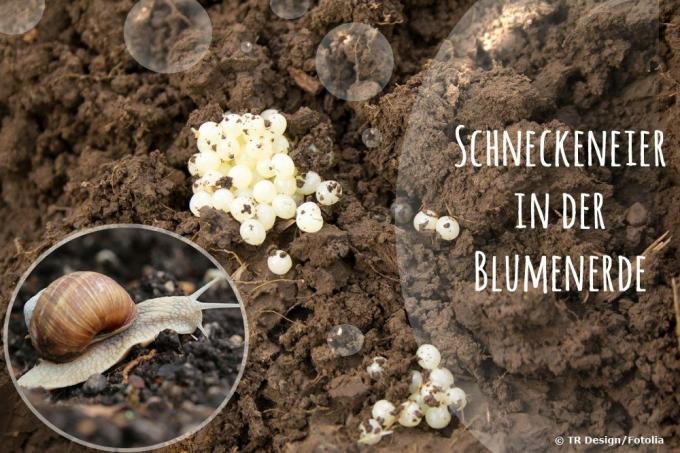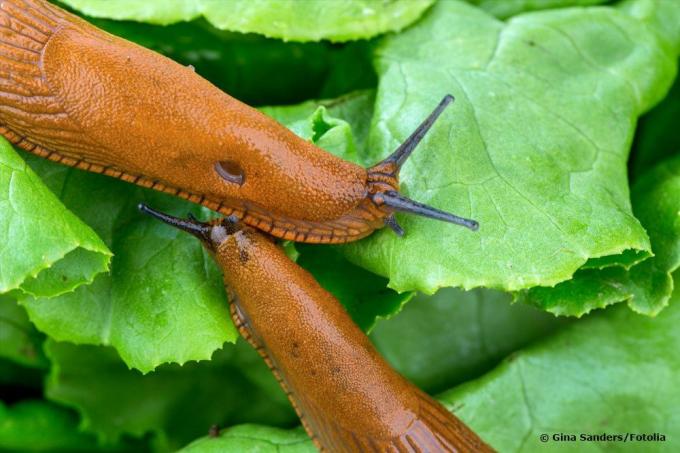
table of contents
- Snail eggs
- Color and shape
- Storage locations
- confusion
Snails are the horror in every garden. The voracious little beasts like to eat salads and other vegetables, but of course they don't scorn fruit either. Anyone struggling with a snail plague quickly sees their entire harvest in danger. Action is urgently needed. In doing so, however, the snail eggs are mostly forgotten. They pose at least as great a threat as the adult animals - but only in the coming year.
Snail eggs
Above all Nudibranchs are a big problem in many gardens - even if they have long been removed. The animals lay eggs from which the young snails hatch after a while. Per slug can easily get up to 400 eggs a year. If the animals hatch, there is almost certainly a real snail invasion in the garden. It is therefore necessary to track down the clutches and destroy them. To do this, of course, you have to know their appearance and where they are stored with a certain preference.
Color and shape
The first and most important question is, of course, what snail eggs actually look like and how they can be clearly identified. The answer to this is relatively simple: the eggs of slugs, in particular, are usually small, white to slightly yellowish globules. The size of a single egg is roughly the same as the head of a pin. Often several of these mini-spheres lie loosely together in small lumps. If you touch them, you notice that they are very soft and react to pressure. Their light color alone makes them stand out from the ground below.
Storage locations
Recognizing such a clutch is of course much easier if you know exactly where to look. This is because snails have a number of preferred places where they leave their eggs. The most popular are small ones Burrows. These often arise when the vegetables are harvested. It is therefore recommended to smooth the bed area with a rake immediately after harvesting. In addition, clutches can be found under mulch and leaf covers, on sidewalk edges, by barrels or under loose stones. If you are winterizing the garden in autumn, you should go looking for it in a targeted manner. You can then collect the clutches with a jar and dispose of them directly in the closed household rubbish. On the other hand, they have no business being on the compost heap.
confusion
It happens again and again that garden owners believe that they have discovered snail eggs in the garden or potting soil they have bought. However, this is always a matter of confusion. What looks like eggs at first glance is nothing but more valuable Depot fertilizer. It is made up of individual grains that can actually resemble snail eggs in color and size. However, the grains are also relatively hard. With a short feel test, it is therefore easy to distinguish what exactly it is actually in the ground.


